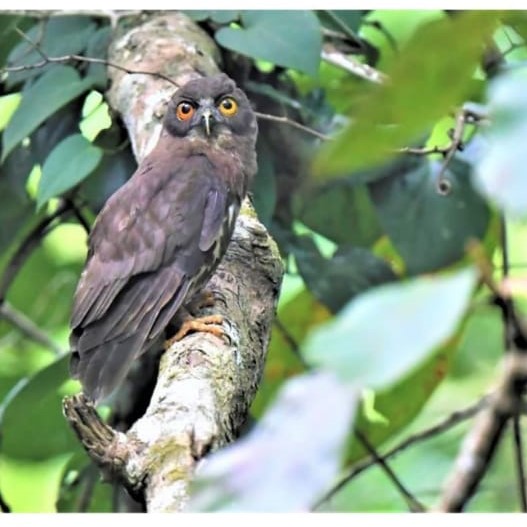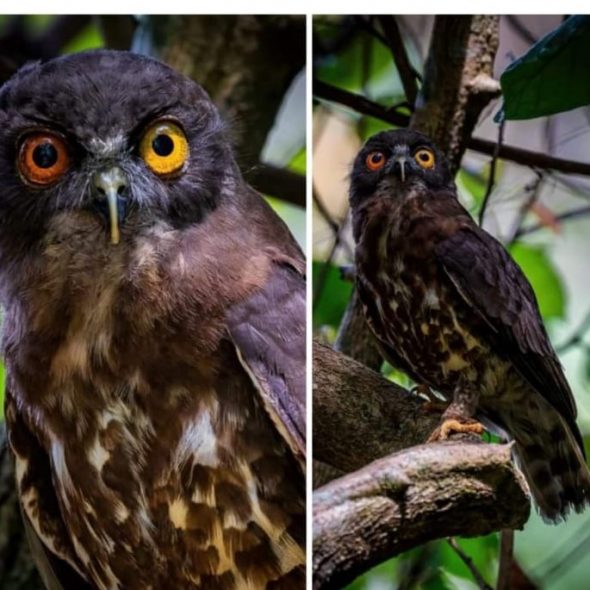
There is a perceptible air of excitement amongst the birding circles in Singapore caused by the appearance of a brown hawk-owl along Mandai Track 7. Art Toh and Peach Won shared this picture of the bird with different coloured iris in each eye.

Trevor Teo shared the second picture of the same bird showing the typical yellow iris and the right eye showing an atypical orange-red coloured iris. This condition is known as heterochromia iridis. I had the opportunity to chat with Trevor and he shared that he waited about an hour on 15/8/2021, a Sunday afternoon, before the bird made its appearance. The bird jumped from tree to tree along the edge of the forest at Seletar Reservoir. The photograph was snapped at about 3 pm and no flash was used. Trevor staked out the same place on 18/8/2021 but the bird did not show up for photoshoots. Trevor’s friends saw the bird on subsequent days.


There is documentation of some species of birds displaying different coloured iris at different stages of their life. Some ornithologists believe these changes are brought on by hormonal changes as the birds reach sexual maturity. Some birds exhibit different coloured iris because of its gender.
It is unknown what brought on this condition in this particular bird. Perhaps it suffered an eye infection or injury. It could also have had some damages to its nerve or altered blood flow. Or it could be a genetic predisposition. To determine the cause, birders can keep up the snapshots of this oddity.
Posted by K~LW
BESG thanks Dato’ Dr Amar-Singh HSS & Datin Dr Swee-Im Lim for their expertise and generous help in this write-up.
This post is a cooperative effort between Birds, Insects N Creatures Of Asia and BESG to bring the study of birds and their behaviour through photography and videography to a wider audience.








